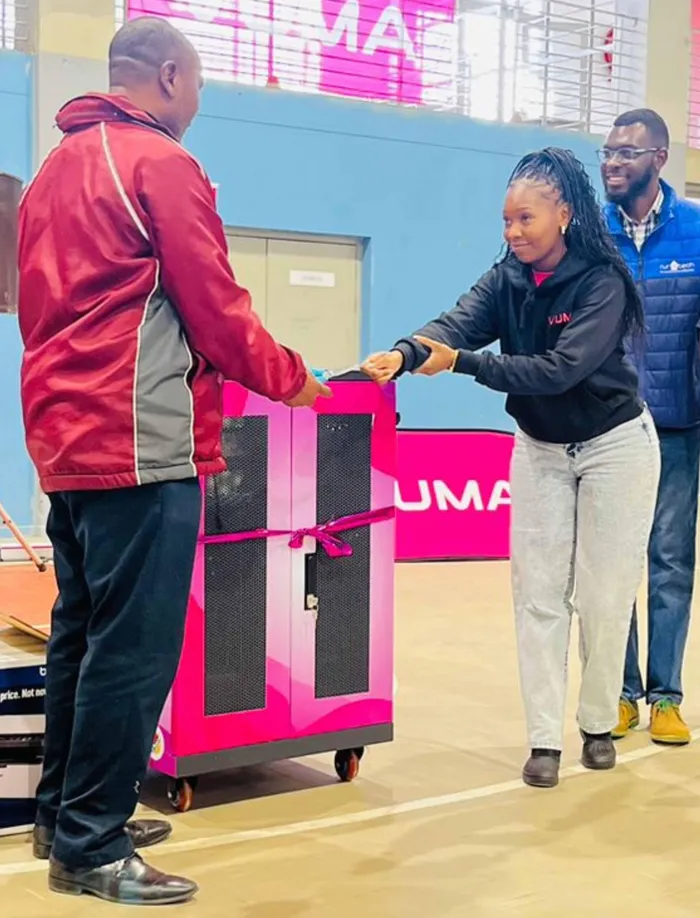Transforming education: Free internet and digital library for Kayamandi Secondary pupils

Kayamandi Secondary School principal Maphelo Ntshanga with internet service provider schools marketing coordinator Lungile Selahle at the handover of a digital library to the school.
Image: Supplied
Pupils at Kayamandi Secondary School in Stellenbosch no longer need to walk far distances for free internet service.
Thanks to a collaboration between a social enterprise, a fibre network operator, and an internet service provider, pupils now have access to free fibre connectivity and internet, and a mobile digital library at their school.
The digital library is secured in a moveable unit and gives the school’s 1 800 pupils offline access to learning materials and career tools.
“They used to walk to town to find internet access or use the university library a few kilometres away from the school.
“But with this library now on school grounds, we’ve brought those opportunities closer, made them safer, more accessible, and part of everyday learning,” said Kayamandi Secondary’s principal, Maphelo Ntshanga.
Backed by fibre, teachers at Kayamandi Secondary can now issue assignments digitally and track the progress of pupils in real-time. Pupils are also exposed to interactive learning tools, including coding through Scratch Junior.
Mr Ntshanga said the digital library has given pupils access to digital tools, which they were not previously exposed to. And in so doing, it is changing their mindsets, he said.
“Our learners were not exposed to digital tools until now. It’s giving them options they never had before.
“They can research careers, learn new skills and imagine different futures. We are incredibly grateful,” said Mr Ntshanga.
Director of the social enterprise, Jeffrey Katuruza, said the digital library is levelling the playing fields for Kayamandi Secondary pupils.
“The world is going digital, and it’s moving fast. But learners in township and rural schools are still being left behind. This library gives them a real shot at competing on equal footing,” he said.
Mr Katuruza said the fibre network operator is exposing learners to a world of possibilities that can shape their futures.
“Installing fibre infrastructure is the first critical step, but it needs to be paired with access to digital tools and educational resources to have an impact.
“This project is about providing real access and empowering learners to use it fully. If we don’t expose learners to these tools and opportunities, we’re just reinforcing existing barriers.
“Education is the most powerful way out, but only if learners can access it in ways that prepare them for the real world,” Mr Katuruza said.